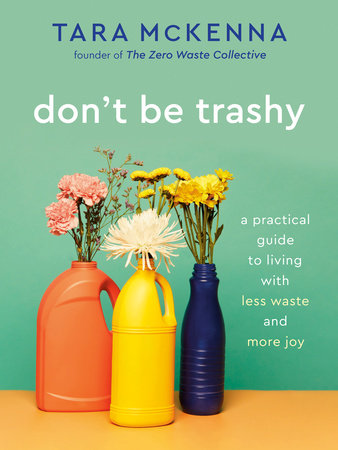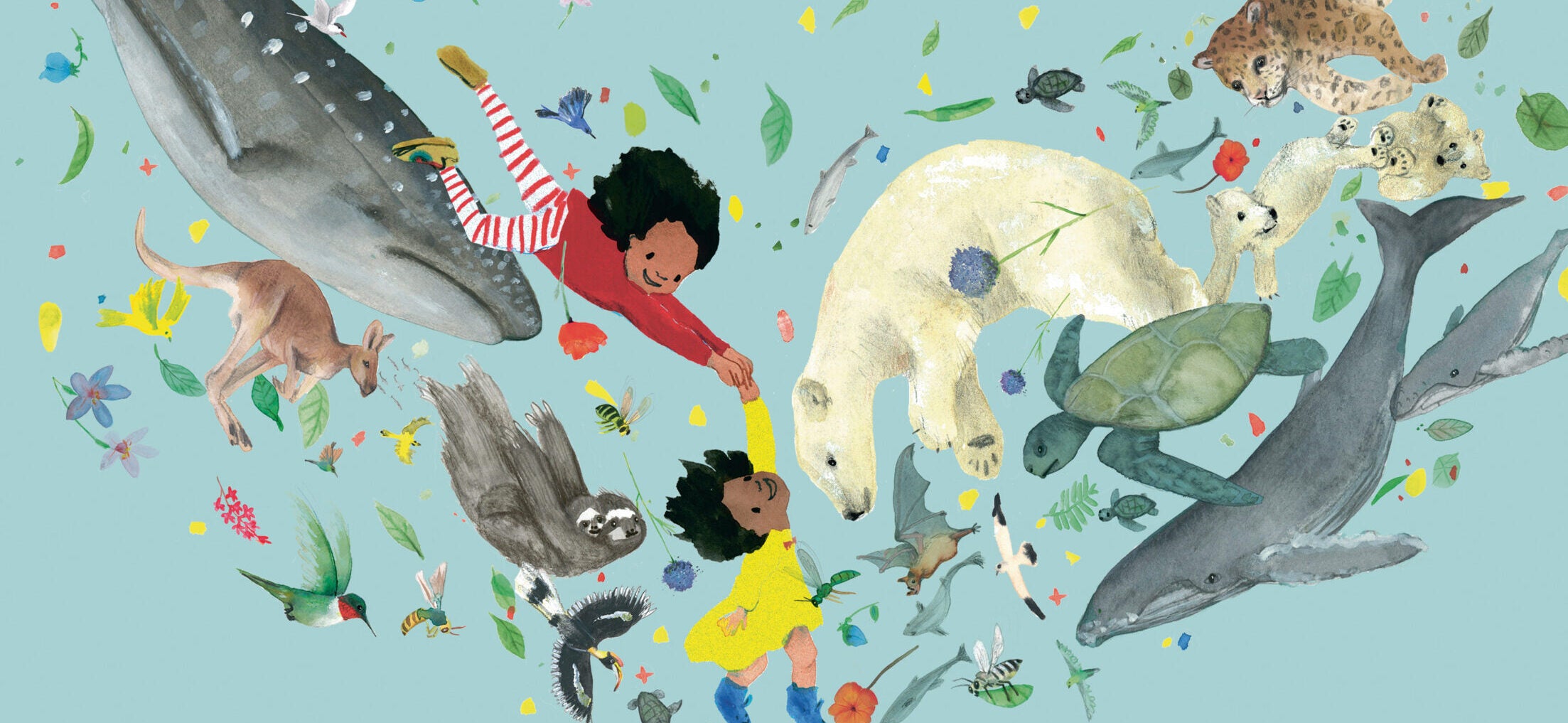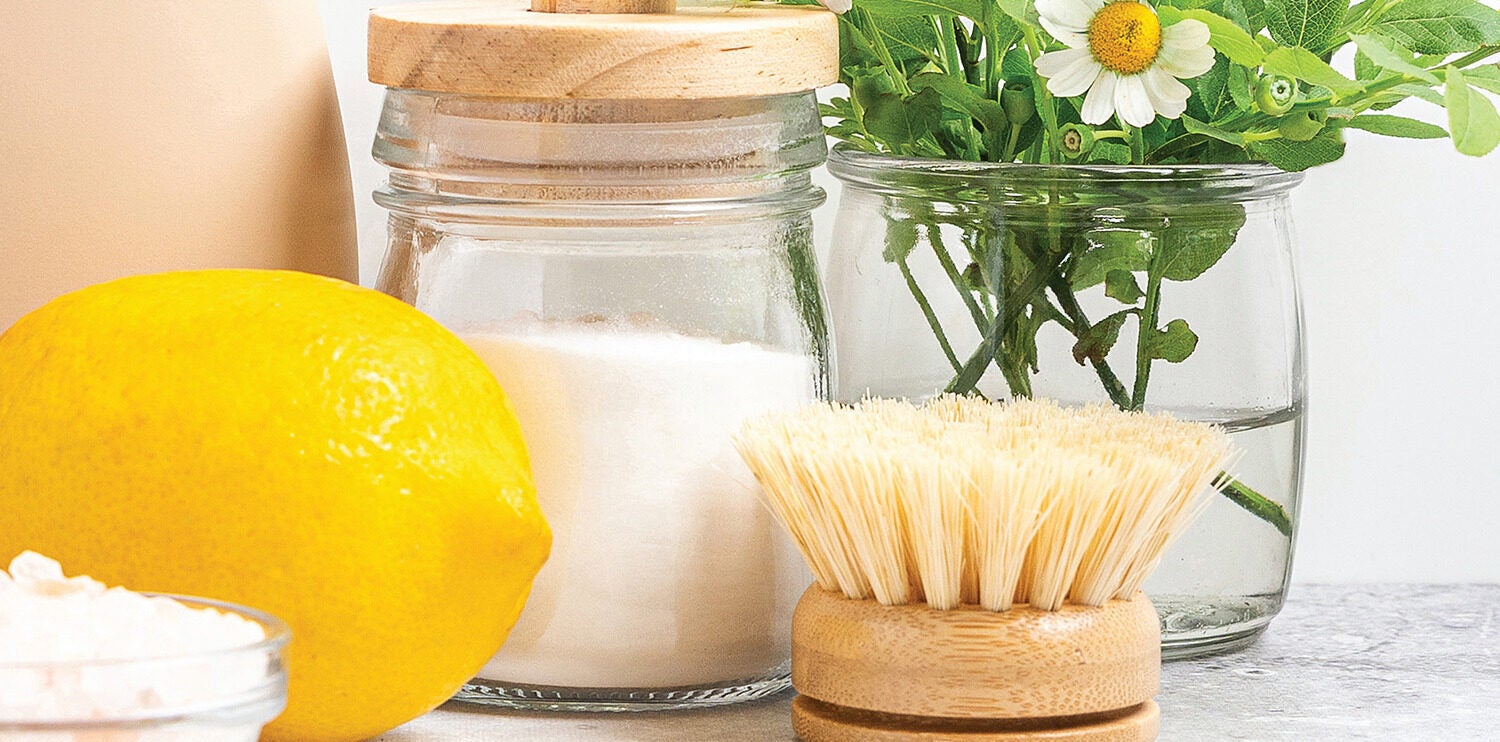Chapter 1
Trash Talk Basics
Define your version of low-waste living, find your “why,” and learn the eight Rs
First Things First
If there’s one thing that just about everyone reading this book has in common, it’s owning too much stuff. Most of us do. In fact, clearing my home of clutter was the natural first step in my journey toward reducing my waste. My fiancé and I got married in 2014. We both landed new jobs and moved back to my hometown, where he and I had met at university. Between all the generous gifts we received at our wedding, and all of the things we brought into our new home from our childhood and university years, there was quite a bit of clutter. And honestly, a lot of the junk was mine—I was even holding on to high school notebooks, textbooks, and binders bursting at the seams.
When I asked myself if I was ever going to read those textbooks or notes again, the answer was an emphatic nope. So the textbooks were donated and everything else went straight into the recycling bin. It felt freeing! A weight lifted that I hadn’t even noticed was there. I had been lugging all of these things around with me for years, and when you keep that kind of stuff, an expectation develops in the back of your mind that you have to do something meaningful with it. But the truth was that I wouldn’t ever refer back to that information, because I had better things to do with my time. In essence, decluttering those physical manifestations of my past also cleared away the mental burden of holding on to them and tending to them.
What does decluttering even have to do with being less trashy? The connection for me is about minimalism and living with less. Did you grow up hearing the “three Rs” adage “reduce, reuse, recycle” repeated over and over by teachers and parents? I certainly did, and decluttering and minimalism are deeply linked with that first R: reduce. Reducing is about contributing to a decreased demand for “stuff” by consuming less, which, in turn, helps reduce waste created by the manufacturing of products; minimalism as a lifestyle is about wanting less in the first place. Decluttering comes into the picture because it helps us start with a clean(er) slate and empowers us to let go of both physical and mental baggage. Quick word of caution: It can be easy to get carried away with the minimalist lifestyle by adopting a shiny and new minimalist aesthetic, which can lead to further consumption. It’s a pitfall we’ll discuss later in the book.
Whether you’re into the KonMari Method popularized by Marie Kondo (asking yourself, “Does this spark joy?”) or you’ve followed the teachings of The Minimalists, there are many effective approaches to removing extraneous stuff from your life. The link between these ideas and low-waste living is really about recognizing that we don’t need a lot of stuff to live a good life. And do you want to know what the most shocking part is, when you stop to think about it? All that stuff used to be money! Our compulsion toward stuff is so substantial that we will spend an entire month on decluttering and minimalism in chapter 2.
Zero Waste vs. Low Waste
The concept for this book was born from the zero-waste lifestyle movement. That said, the zero in zero waste is an almost impossible goal to attain given our current societal norms. So what exactly does zero waste mean, anyway? The Zero Waste International Alliance defines zero waste as:
The conservation of all resources by means of responsible production, consumption, reuse, and recovery of products, packaging, and materials without burning and with no discharges to land, water, or air that threaten the environment or human health.
Blah blah blah . . . That’s great, but what does that have to do with us? While this definition is useful to inform policy and legislation, it’s highly technical and not relatable on a personal level. The zero-waste lifestyle movement, however, calls on individuals to avoid as much waste as possible. Think about yourself a bit like Neo (Keanu Reeves) dodging bullets in the movie The Matrix—only in this case, you’re dodging trash! We live in a system that bombards us with trash, and a lot of the time it might not seem possible to escape being a trashy consumer. Yet when we slow down to inspect the things coming at us on a day-to-day basis, we find ourselves able to dodge things like single-use disposables, to avoid buying overpackaged products, and to actually send far less waste into the trash bin than we originally imagined.
When I started decluttering my home, I didn’t have a lot of preconceptions about what it meant to reduce my waste, and I didn’t know anything about the zero-waste subculture I would soon become a part of. These days, the term zero waste has become trendy, and if you’ve searched it on the internet, you’d probably think going zero waste means fitting an entire year’s worth of trash into a small mason jar. That, of course, is followed by sharing your proud little trash jar on social media. This approach has become popularized online by some devoted advocates of zero-waste living. Sure, it’s an ideal for some to strive for, but for most of us, it’s often discouraging and unrealistic. From the outside, it looks like a rite of passage that separates the real tree huggers from the wannabes. Although I gave it a try, the trash jar thing never resonated with me.
Just like the weight-loss world, which has offered up extreme diets like ketogenic, Atkins, Paleo, etc., the zero-waste lifestyle movement has its share of extremes, too. I’ll be the first to tell you that the tiny trash jar is one of them, and it’s not really what we’re aiming for in this book. What I’m here to do is to teach you how to walk before you can run—how to reduce your waste, one month at a time, to the level that works for you and your life, so that you’re making changes that last. If you want to run an ultramarathon while the rest of us work up to a 5K, I will definitely be there cheering you on. But if there’s anything I’ve learned on my zero-waste journey, it’s that it can be incredibly stressful to live in modern society and be completely zero waste. Aside from the obvious point that it’s challenging to produce basically zero trash, the guilt factor is off the charts. If I mess up and find myself stuck with a wrapper or a tag (or, even worse, a plastic bag), I feel like a total poseur. Hello, impostor syndrome. I just can’t handle that kind of pressure, and I’m not here to shame you if you find a gum wrapper in your pocket one day.
I think it’s time for me to make a confession: Even though I founded a lifestyle website and brand called The Zero Waste Collective to inspire others to reduce their waste, I’m not perfectly zero waste myself. Low waste is more apt, but I do sometimes use the term zero waste because it’s the ideal goal for moving toward a circular economy (where nothing is wasted), which I wholeheartedly support.
When it comes down to it, low-waste living is about making the world a better place for future generations, and for the diverse flora and fauna that we share this beautiful planet with. So for the purposes of this book, becoming less trashy is about the reduction of your waste as it fits within the context of your life circumstances and budget. This is a you do you kind of book. Even if you make just a few lasting changes after reading this book, you will have achieved success.
Copyright © 2022 by Tara McKenna. All rights reserved. No part of this excerpt may be reproduced or reprinted without permission in writing from the publisher.







